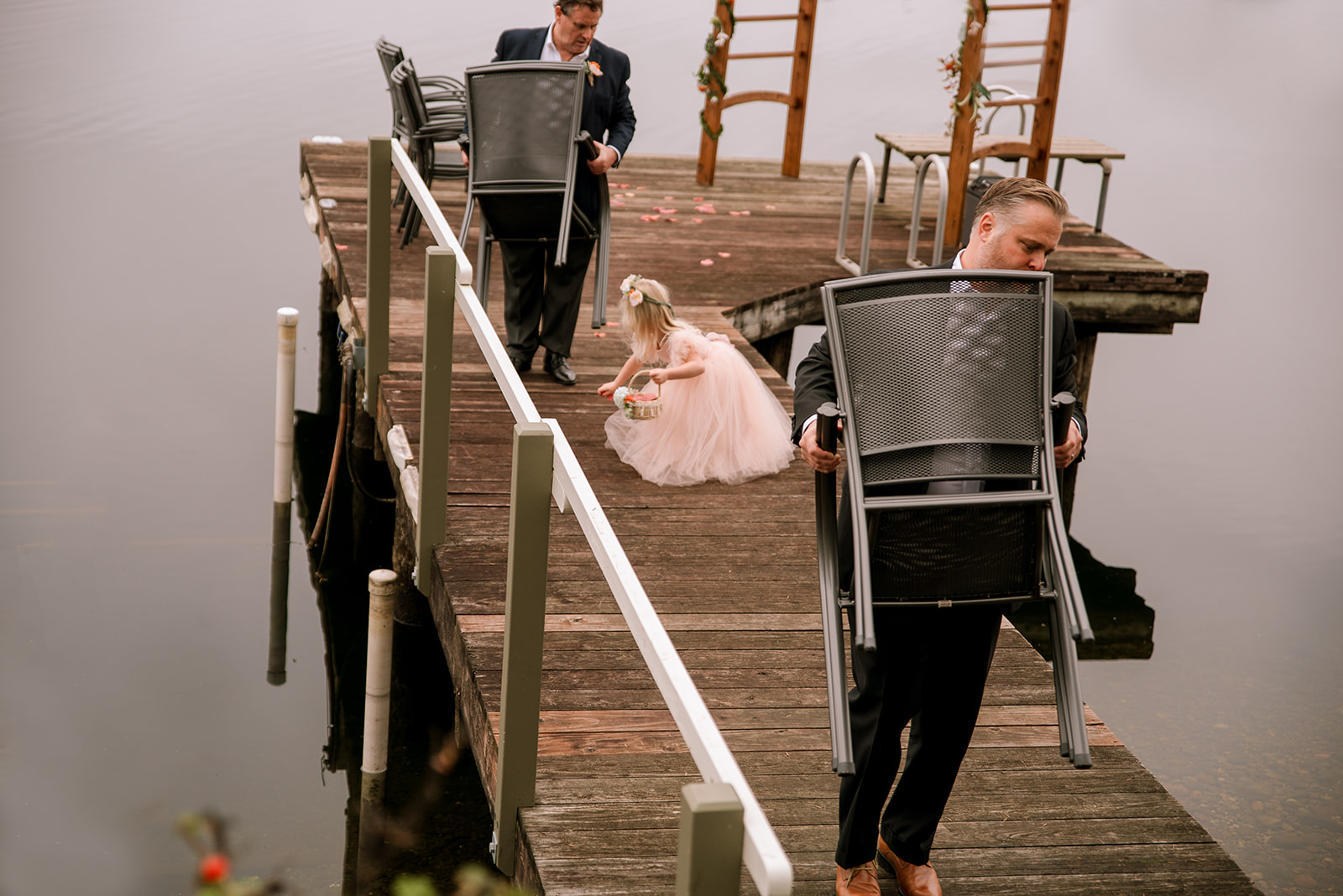There’s something magnetic about photographs that pull you in, the kind that don’t just show a moment, but make you feel it. As a documentary wedding photographer, that’s what I’m chasing at every wedding. It isn’t just about snapping what’s happening, it’s about translating the energy of the day into something tangible and timeless.
Over the years, I’ve honed a toolkit of techniques that I use every single wedding to help me do just that. Here are ten of my go-to methods for getting in the action and capturing deeply emotive, motion-filled images. Without further ado, my secret sauce as a documentary wedding photographer: 10 techniques I use every wedding to capture emotion and energy.
.

.
1. Get In Close to Capture Real Emotion
.
Zoom lenses create distance. Emotion lives in proximity.
That’s why I favor wide lenses and close presence. As a documentary wedding photographer, I’m always there, gently, naturally, without drawing attention. I blend into the day so people forget the camera. When your aunt grabs your face and laughs with her whole body, I’m right beside her, not across the room, so when you see that photo, you don’t feel like a bystander, you feel like you’re there.
Example: During the hora at a Jewish wedding, I’m not on the sidelines. I’m in the circle, dodging elbows and flying shoes — because that’s where the story and all of the emotion lives.
.

.
2. Photograph the Setting to Build the Story
.
The location is a key part of the story.
I don’t just grab a wide shot of the ceremony space and call it done. A documentary wedding photographer catches the hush before guests arrive, the scribbled vows in the corner, the way the light lands on your bouquet next to a half-drunk coffee.
Example: Before I even start the day, I’ll photograph the whole full scene and zoom in on a little details that give the viewer a sense of place. Like in the photo below, I photograph through the window pane to show what the scenery looked like from the getting ready suite. And I might capture other spacial details that express what it felt like to be in the space – a wide shot of the bride laughing with the hairdresser and her bridesmaids, the reflection of a dress in the window, and the flower girl playing quietly under a table. These are the kinds of images that introduce us to the narrative, just like the opening lines of a great book.
.

.
Image photographed at Lake Crescent Lodge
.
3. Use Layering to Show Story Context
.
Layering is one of the most powerful tools for storytelling in documentary wedding photography.
I shoot through windows, doorways, foliage, and people. It creates a physical and emotional dimension. It puts the viewer in the scene, not just observing it. A photo isn’t just about who is in it, but how it felt to be there.
Example: Photographing through a group of chatting guests to catch a tender hug behind them. Or in the photo below, zooming past the bride dancing with her father, to see her sons soft and sweet reaction.
.
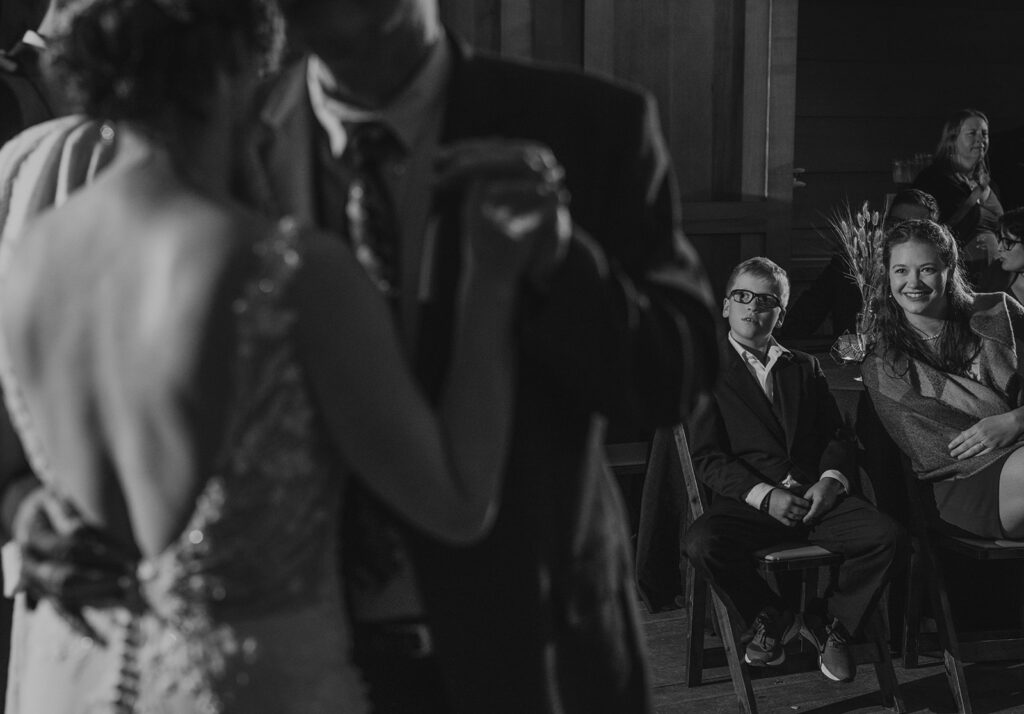
.
Image photographed at Treehouse Point
.
4. Capture the Full Arc of a Moment (Beginning, Middle and End)
.
Every interaction has a story arc.
I treat even fleeting moments like little films. I photograph the buildup (a glance, a hand reaching out), the peak (a laugh, a kiss, a gasp), and the aftermath (reactions, stillness). The series of images together, can tell a more powerful story.
Example: In the example below, a mom glances at her notes and prepares herself. Through tears she gives the toast to her daughter. And then the brides and the whole table erupt in laughter.
.
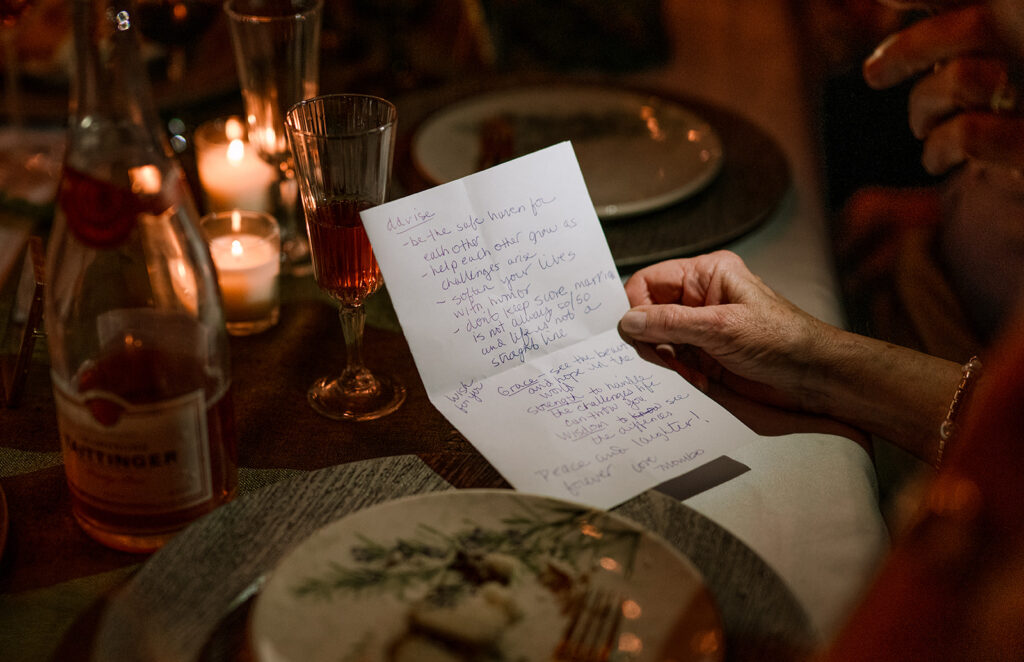


.
5. Focus on Meaningful, People-Centered Details
.
I’m not the photographer who puts your dress in a tree. (Unless that tree means something to you.)
Instead, I focus on woven details, the ones connected to people, place, and meaning. Your grandma adjusting your necklace. The worn prayer book tucked into your bouquet. The handwritten note beside your dad’s cufflinks.
Example: Instead of staging your shoes on a windowsill, I’ll photograph your mom helping you step into them, her hands steadying you with care.
.
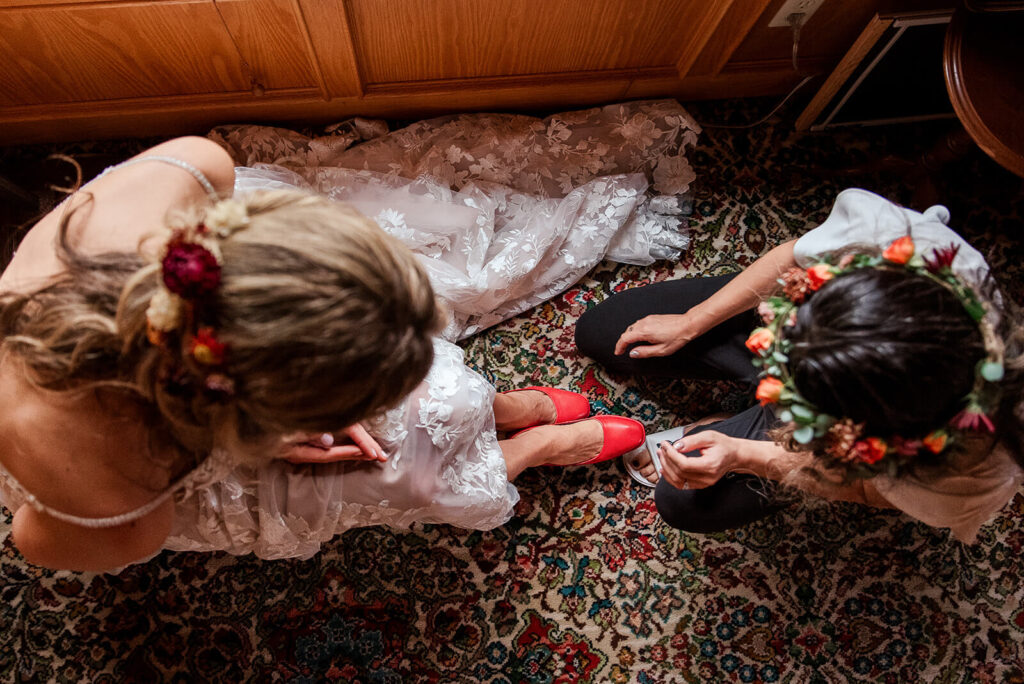
.
Image photographed at Crockett Farm, Whidbey Island
.
6. Prioritize Moments Over Perfection
.
My priorities are simple: moment first, then light, then composition.
A photograph can survive imperfect light or framing. It can’t survive a missed moment. I’ll shoot through challenging light and wild compositions if it means preserving that spark of genuine emotion.
Example: A quick tear wiped away in a dim corner during a quiet exchange, I’ll get it, even if I’m shooting at ISO 8000 with zero time to compose. Or in this photo – a real, candid, undirected moment of the couple just after they walk back down the aisle married and sneak into a quiet dimly lit room to celebrate. Is it perfectly lit? Nope. But this moment is PERFECT.
.

.
Photo documented at The Ruins, Seattle / Check out this Blog Post from a real wedding at The Ruins
.
7. Anticipate Emotion Before It Happens
.
To capture what’s real, I have to see it before it happens.
I read the room. I feel the tension build before the surprise speech, the way a kid’s eyes dart before they pounce on their cousin. And I stay still in the right places and wait not for perfection, but for truth.
Example: During the recessional, I’m already watching mom’s face in the front row because her reaction will be pure gold.
.
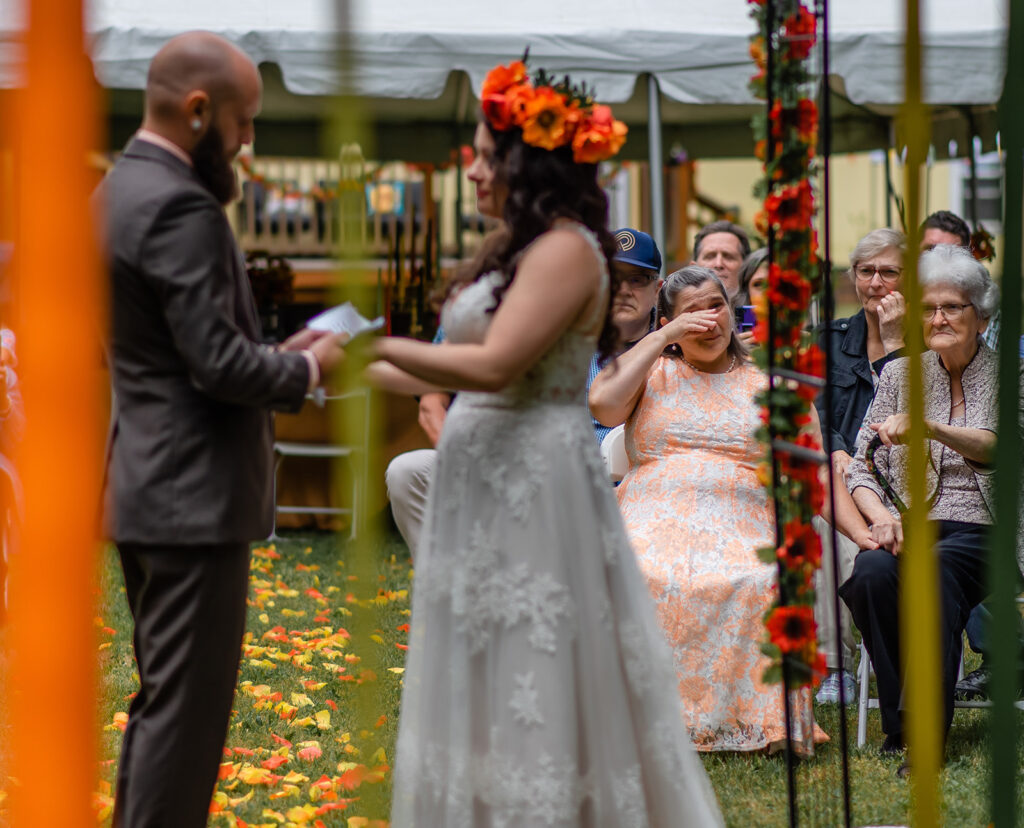
.
8. Follow the Eyes to Find Connection
.
Eyes tell the real story.
I adjust my angle to meet people eye-to-eye, even if that means crouching low, climbing high, or shooting from the floor. I’m not just photographing faces; I’m capturing connection.
Example: When your niece is spinning in her party dress, I shoot from above to capture her dizzy, delighted eyes looking skyward. Or when your giving your cat pets while she is perched atop the couch, I dive to the ground because that’s where she’s looking.
.
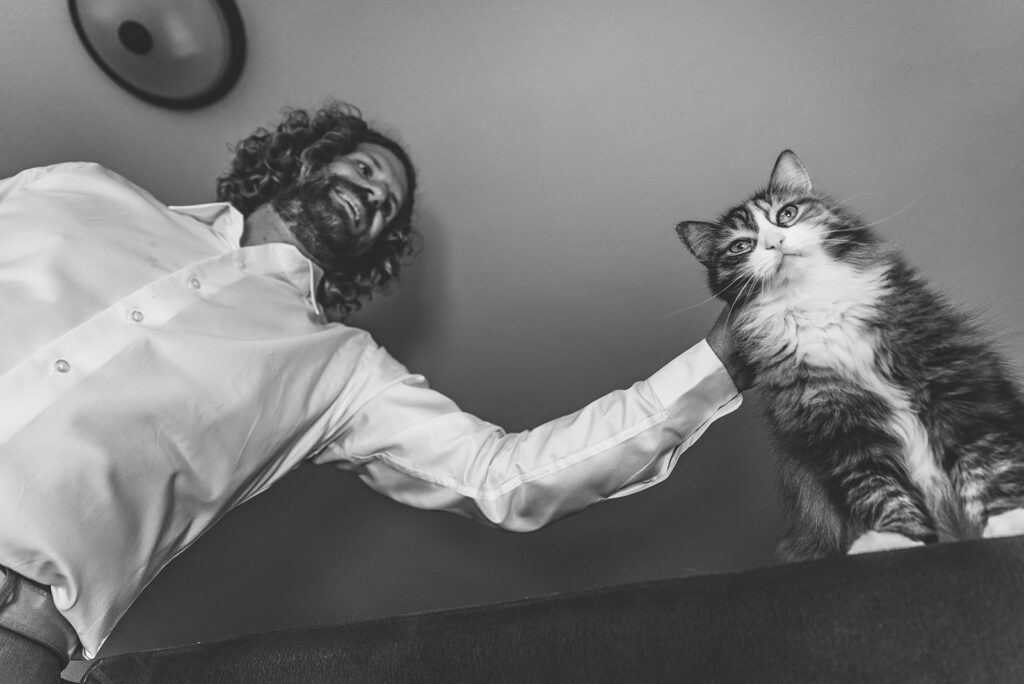
.
9. Preserve the Mood With Natural & Low Light
.
Your candlelit vows should look candlelit, not like a department store dressing room.
I work with the light that’s there, preserving the mood you envisioned. My gear is built for low-light, and when I need to add flash, I often do it off-camera, discreetly, careful to not ruin the vibe.
Example: A dinner under twinkling bistro lights should feel warm and romantic in your photos, not like someone brought a floodlight to dinner.
.
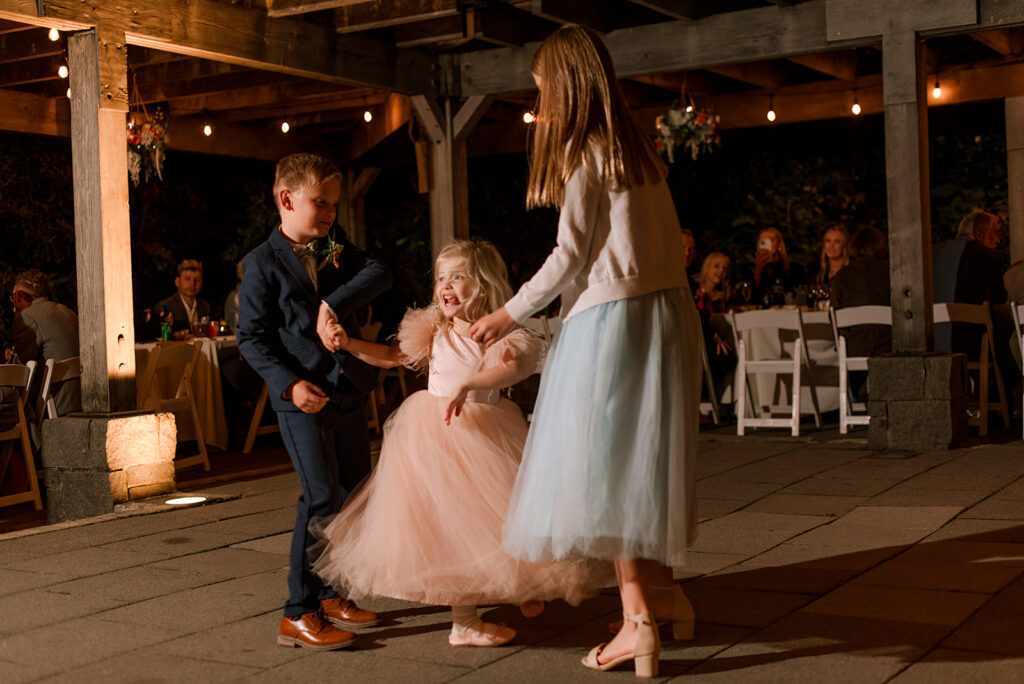
.
Image photographed at Wisteria Hall, Seattle
.
10. Shoot From Their Point of View
.
Sometimes the most powerful photo isn’t of you — it’s from your point of view.
As a documentary wedding photographer, I shoot over shoulders, from eye level, at child height to show how the world looked through your eyes, or through the eyes of someone you love.
Example: Over your partner’s shoulder as you walk down the aisle. From your dad’s perspective as he watches your first dance, or even from the perspective of the pup guests.
.
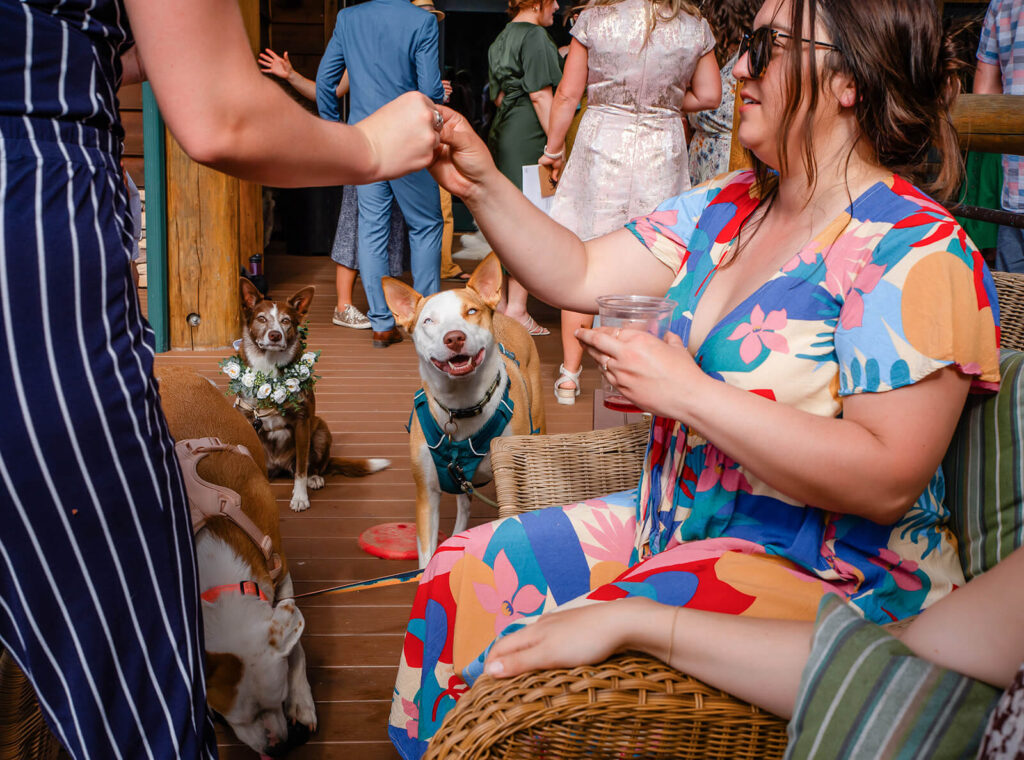
.
Bonus: The Magic is in All the In-Bewteen Micro-Moments
.
Beyond the timeline, a thousand micro stories are happening all day: a flower girl helping with clean-up, a tearful toast, a quiet hand squeeze. I’m watching for all of them. That’s the magic of documentary wedding photography; it doesn’t miss the big moments, but it thrives in the small ones.
.
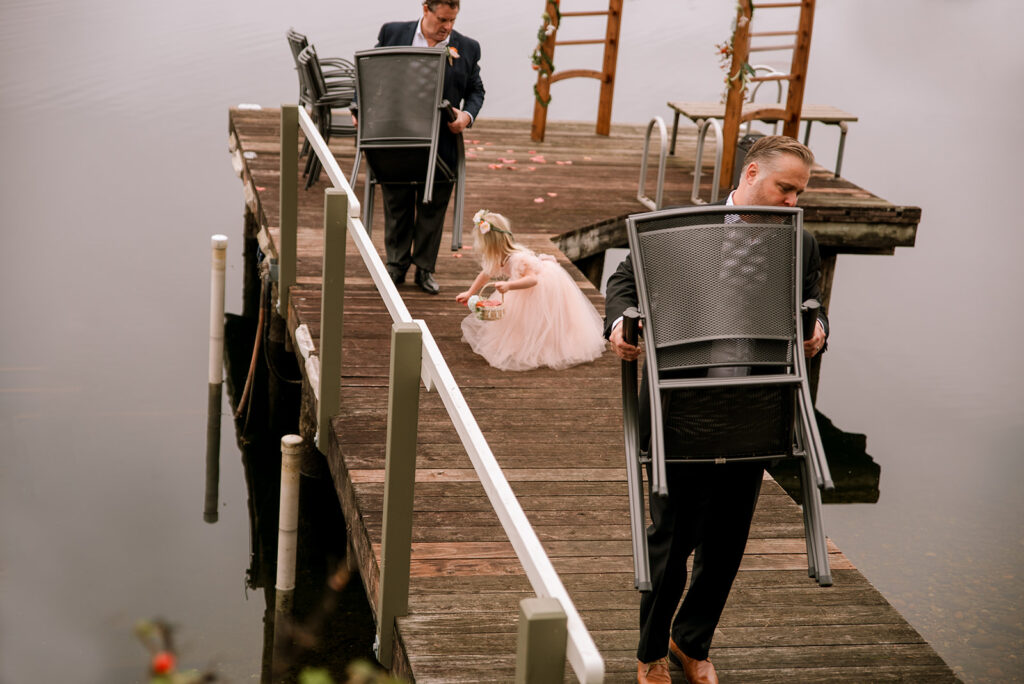
.
Your wedding is a story
.
It is not just a checklist of events but a living, breathing narrative. My job is to tell it as truthfully and beautifully as possible, using these techniques I’ve polished over time and use intuitively at every wedding.
If you’re looking for a more behind-the-scenes look at how I move through an entire wedding day—from getting ready to the dancefloor—you might love this post: Is Documentary Photography Right for Your Wedding? It walks through what documentary photography actually looks like in real time and how I approach each part of the day with intention.
.
Still wondering how documentary photography fits your wedding day?
Check out my FAQ for real talk about timelines, first looks, and what coverage you actually need.
.
